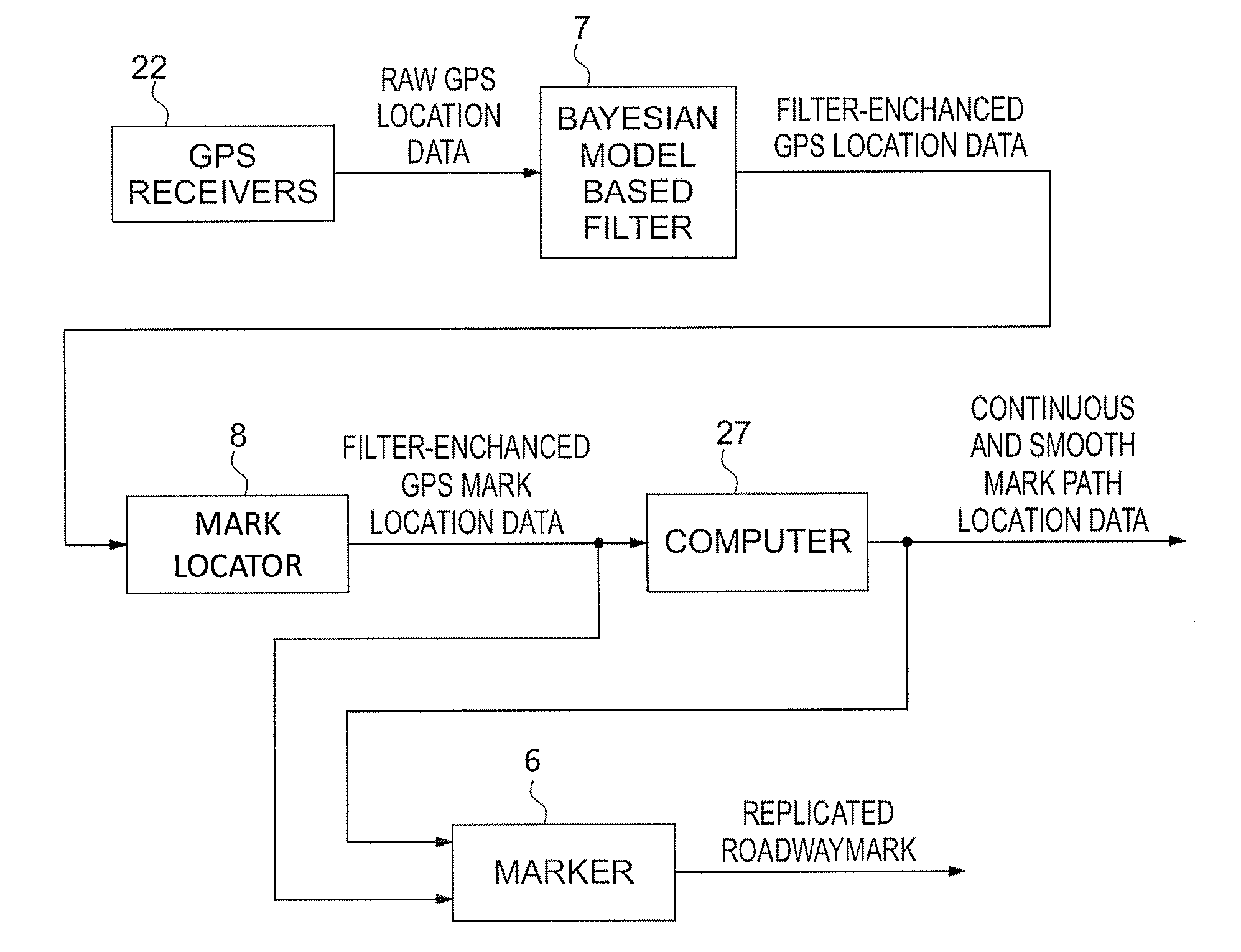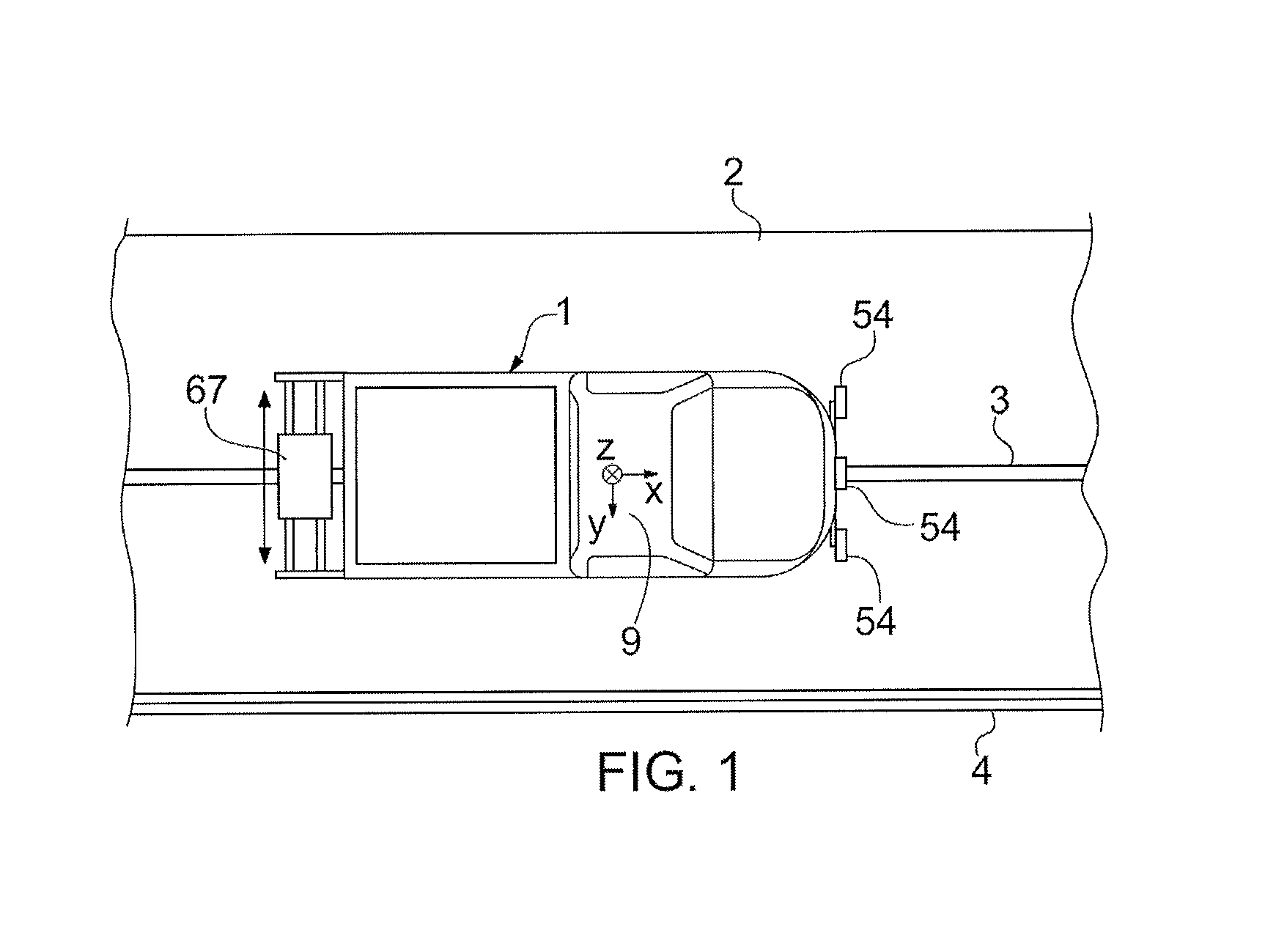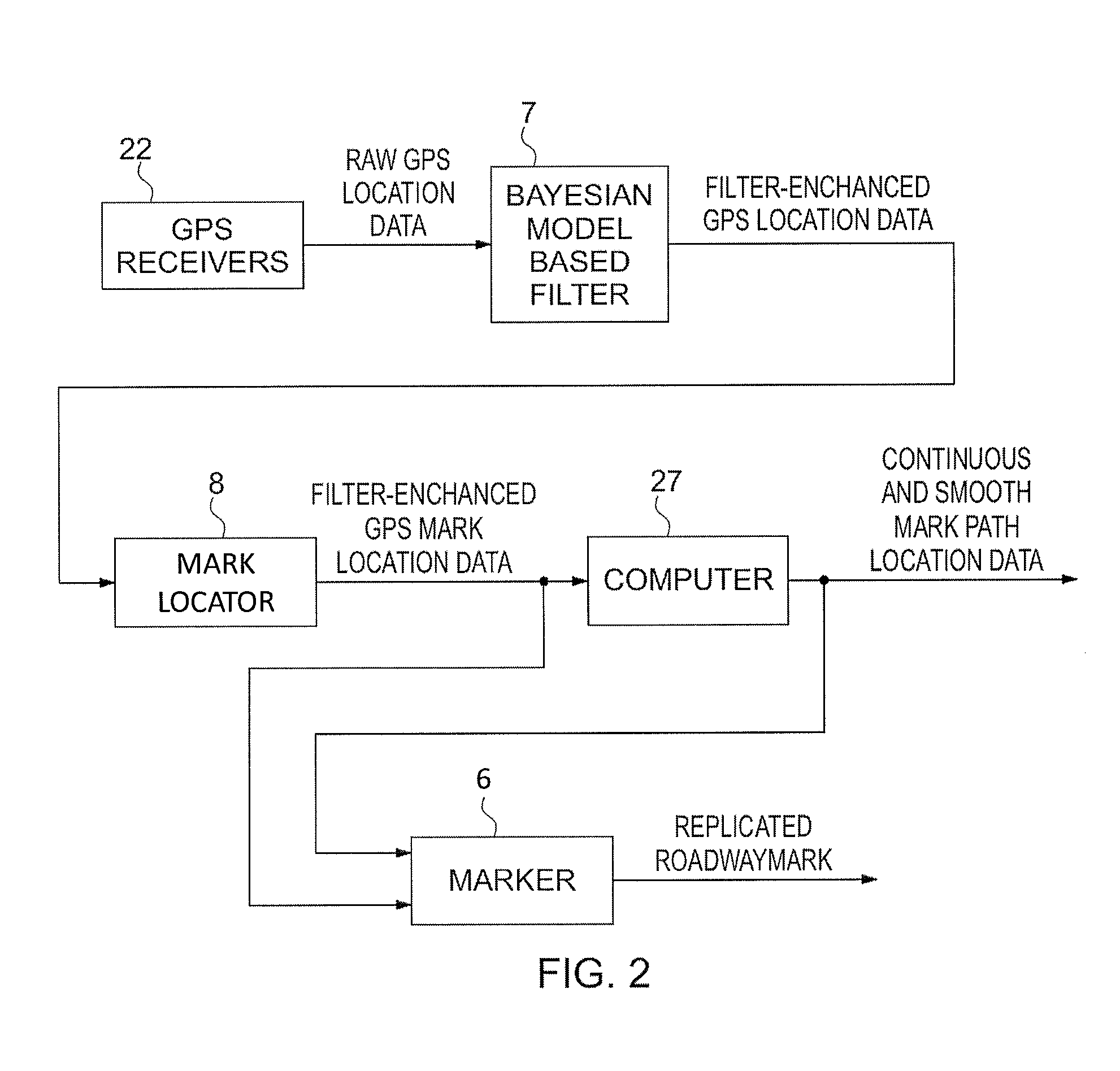During this time, traffic
visibility is impeded and there is a significant potential for oncoming traffic to collide with those workers manually defining the starting and ending positions for each segment.
Unfortunately, these methods required the placement of transmitters along the roadway.
Again, this attempt proved difficult to implement because of
sunlight interference.
There are many disadvantages with using radioactive marking material, including health and safety issues,
longevity (half-life) of the radioactive material, and disposal problems.
This attempt requires that the drawing pattern for the roadway be predetermined and fails if the
exact location of the roadway marking is inaccurately defined, or if the drawing pattern does not correspond exactly with the geographical position of the actual roadway.
The current roadway marking technology has at least several problems.
One problem is that a significant amount of manual labor is required to accurately paint lines on roadways, and as a result workers are placed in an unsafe
working environment during the roadway marking process.
Another problem with
current technology is the inability to easily and quickly obtain sampled geographical coordinates of the existing roadway line marks using GPS or GPS-based
pseudolite arrays.
A related problem is the inability to use this sampled data to generate a continuous function of the geographical coordinates for the entire mark path.
Additional problems are the lack of an offsetting capability to determine other substantially parallel mark paths for line marking and, therefore, the inability to uniformly deposit paint or other material along the first (or second) mark path duplicating the previous mark.
In the past even experienced machine operators have found it difficult to manually guide a
road marking machine with sufficient accuracy even where old markings are available.
However, such attempts have not been wholly satisfactory because a break in the old marking does not give steering guidance during breaks.
Moreover, this approach is of no use whatsoever where the old marks have disappeared or for new markings.
However, these arrangements require transmitters to be placed along the road, and in the case of light beams, are degraded by the effect of
sunlight.
However, this method suffers from the
disadvantage that embedding the radiating material in the
road surface can be costly.
Furthermore, radiating materials tend to lose their effectiveness after a time period.
Although Manning identifies certain disadvantages with the known roadway marking technology, the GPS-controlled paint spray
system disclosed by Manning in the '693 and '934 patents has its own disadvantages.
The system fails if a discrepancy exists between the actual and drawing pattern road position.
In addition, the disclosed system cannot maintain the accurate horizontal registration of the paint markings which is required when the drawing pattern does not accurately match the actual constructed roadway.
This situation occurs where on-site construction changes are prompted by unforeseen construction problems.
Such problems include, for example,
bedrock formations, unstable ground structure, water runoff, and the like.
Such selection does not allow for a smoothly constructed functional fit.
The '693 patent does not disclose any mechanism for producing a curved line.
This system is prone to positional inaccuracies of the operator and is not completely automated.
Individual selection of each roadway mark is
time consuming and dependent upon the skill and experience of the operator.
Furthermore, no mechanism is provided to automatically inspect the roadway marks for
reflectivity and contrast, length and width dimensions, mark fill percentage, and other important quality standards.
Additionally, vehicle-mounted roadway mark locators, inspection apparatus and marking systems which rely solely upon raw (i.e., not post-processed) GPS or GPS-based
pseudolite array systems positional data are prone to many errors which may degrade the usefulness and accuracy of these systems.
However, if the reception of these signals are temporarily lost as the result of foliage obstructions, such as tree cover, or are lost as the result of the vehicle passing through a tunnel or other RF blocking obstruction, the
GPS receiver fails to provide accurate geographical location data resulting in inaccurate roadway mark geographical location data.
Although
real time kinematic (RTK) enhanced GPS-based systems improve the accuracy of the GPS or GPS-based
pseudolite systems to
centimeter accuracy, errors still arise particularly in determining the GPS geographical location of moving vehicles from raw GPS positional data even with the improvements afforded by RTK enhanced raw GPS-based systems.
For example, RTK
signal reception may be lost in addition to the
GPS signals, thereby causing inaccurate geographical location data.
Moving vehicles are also prone to vibrations caused by pot holes and other roadway imperfections which may cause the
GPS antenna to vibrate, yielding inaccurate determination of GPS geographical location data.
Vehicle suspension systems may also cause vibrations as the vehicle moves along a roadway.
Additionally, vehicle loads may change causing changes in the
GPS antenna(s) location and therefore errors in determining the GPS location of the vehicle.
The dispensing process decreases the vehicle load and may cause changes in the roll and
pitch of the vehicle, again causing changes in the
GPS antenna(s) location.
Therefore the loss of either RTK and
GPS signals or both along with vehicle vibrations may cause geographical location inaccuracies for those roadway mark locators, inspection systems and markers singularly dependent upon the reception of only RTK and GPS signals.
 Login to View More
Login to View More  Login to View More
Login to View More 


